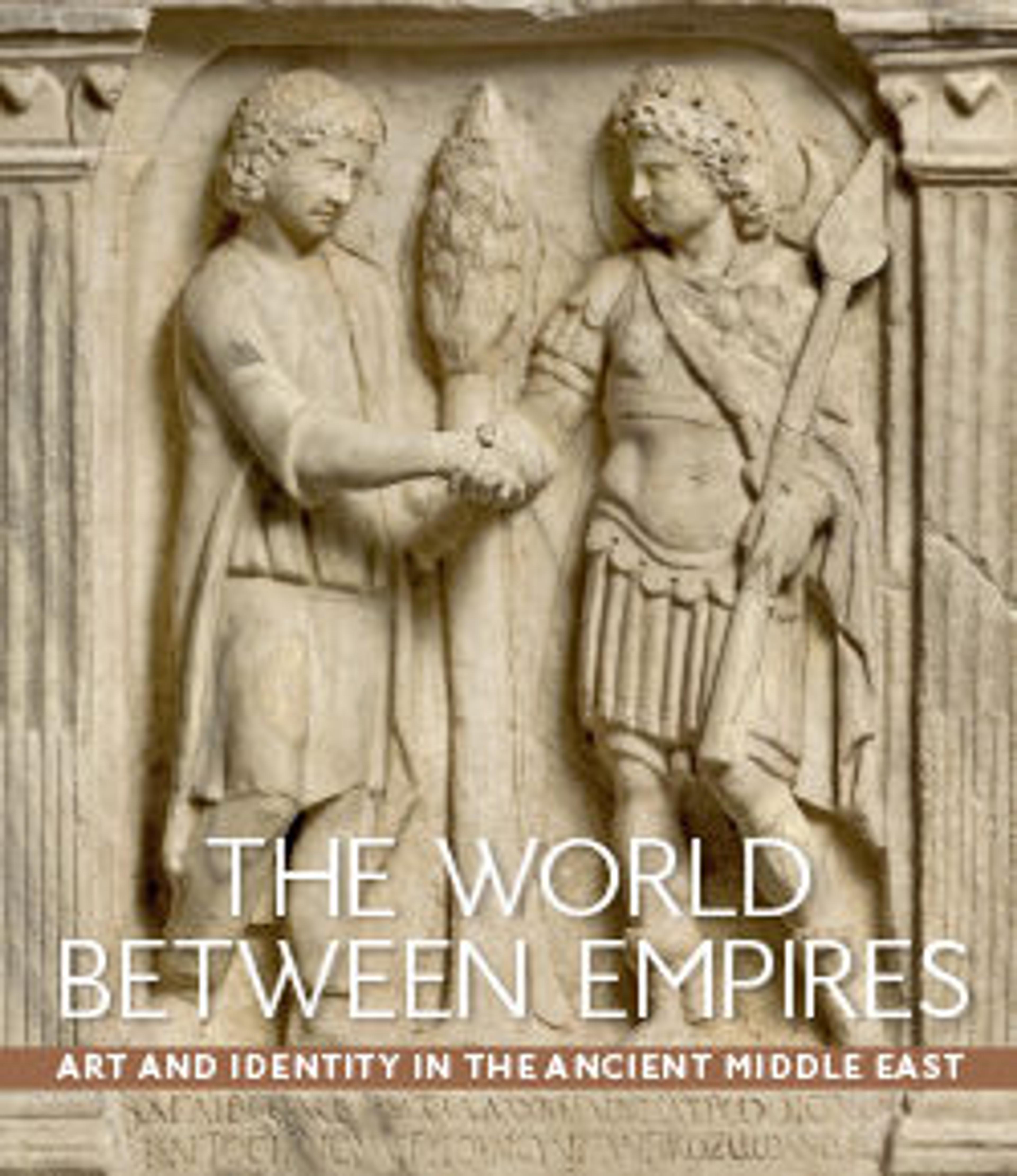Funerary relief
Inscription:
1 Zubaida, son of
2 Dayyanay, son of
3 Male.
4 Alas!
Transliteration:
1 zbydʾ br
2 dyny br
3 mlʾ
4 ḥbl
This relief is a type of funerary monument characteristic of the prosperous caravan city of Palmyra during the first three centuries A.D. Reliefs with a representation of the deceased and a short identifying inscription were used to seal burial niches in elaborately decorated communal tombs; those with a half-length or bust format became prevalent sometime after A.D. 65.
Shown here is the upper body of a bearded man, facing directly toward the viewer in high relief against the background of a dorsalium (draped cloth) secured to a leafy branch; the right side, which probably resembled the remaining half, is now missing. To the left of his head, an inscription gives his name and his father and grandfather’s names, ending with an expression of sorrow common on funerary reliefs at Palmyra. He is dressed in a sleeved garment worn under a himation, or cloak, whose horizontal folds are visible at the bottom of the bust where it wraps around the body. The cuff of the right hand is marked by a plain striped border, while the left wrist is covered by the bunched folds of the himation. The folds of these garments are regular and pattern-like, without a realistic sense of weight and volume. Likewise, his hands are simple blocky forms, without articulated joints or bone structure. He holds a small object, probably a schedula (book roll), in his left hand, and wears a ring on the little finger. His upper eyelids are carefully outlined, and the iris and pupil of each large eye is indicated as concentric incised circles. The eyebrows, shown as curving, incised lines, meet in vertical furrows at the bridge of the nose, below which the nose has been broken off. The distant, impersonal gaze is directed far beyond the viewer. The man’s hair is depicted as a mass of wavy locks, which fall to the back of his neck, while his beard is made up of separate snail-shaped locks. Traces of red paint are still visible on the inscription, the rosette fastening the dorsalium to the branch, and the ring on his left hand. This relief can be stylistically dated to around 150-200 A.D. because of the figure’s beard. The treatment of the eyes, which are still carved with the concentric circles found on earlier Palmyrene reliefs, suggests a date close to 150 A.D.
1 Zubaida, son of
2 Dayyanay, son of
3 Male.
4 Alas!
Transliteration:
1 zbydʾ br
2 dyny br
3 mlʾ
4 ḥbl
This relief is a type of funerary monument characteristic of the prosperous caravan city of Palmyra during the first three centuries A.D. Reliefs with a representation of the deceased and a short identifying inscription were used to seal burial niches in elaborately decorated communal tombs; those with a half-length or bust format became prevalent sometime after A.D. 65.
Shown here is the upper body of a bearded man, facing directly toward the viewer in high relief against the background of a dorsalium (draped cloth) secured to a leafy branch; the right side, which probably resembled the remaining half, is now missing. To the left of his head, an inscription gives his name and his father and grandfather’s names, ending with an expression of sorrow common on funerary reliefs at Palmyra. He is dressed in a sleeved garment worn under a himation, or cloak, whose horizontal folds are visible at the bottom of the bust where it wraps around the body. The cuff of the right hand is marked by a plain striped border, while the left wrist is covered by the bunched folds of the himation. The folds of these garments are regular and pattern-like, without a realistic sense of weight and volume. Likewise, his hands are simple blocky forms, without articulated joints or bone structure. He holds a small object, probably a schedula (book roll), in his left hand, and wears a ring on the little finger. His upper eyelids are carefully outlined, and the iris and pupil of each large eye is indicated as concentric incised circles. The eyebrows, shown as curving, incised lines, meet in vertical furrows at the bridge of the nose, below which the nose has been broken off. The distant, impersonal gaze is directed far beyond the viewer. The man’s hair is depicted as a mass of wavy locks, which fall to the back of his neck, while his beard is made up of separate snail-shaped locks. Traces of red paint are still visible on the inscription, the rosette fastening the dorsalium to the branch, and the ring on his left hand. This relief can be stylistically dated to around 150-200 A.D. because of the figure’s beard. The treatment of the eyes, which are still carved with the concentric circles found on earlier Palmyrene reliefs, suggests a date close to 150 A.D.
Artwork Details
- Title:Funerary relief
- Date:ca. 150–200
- Geography:From Syria, Palmyra
- Medium:Limestone, paint
- Dimensions:21 3/4 x 17 x 10 9/16 in. (55.2 x 43.2 x 26.8 cm)
- Credit Line:Purchase, 1901
- Object Number:01.25.2
- Curatorial Department: Ancient West Asian Art
More Artwork
Research Resources
The Met provides unparalleled resources for research and welcomes an international community of students and scholars. The Met's Open Access API is where creators and researchers can connect to the The Met collection. Open Access data and public domain images are available for unrestricted commercial and noncommercial use without permission or fee.
To request images under copyright and other restrictions, please use this Image Request form.
Feedback
We continue to research and examine historical and cultural context for objects in The Met collection. If you have comments or questions about this object record, please contact us using the form below. The Museum looks forward to receiving your comments.
